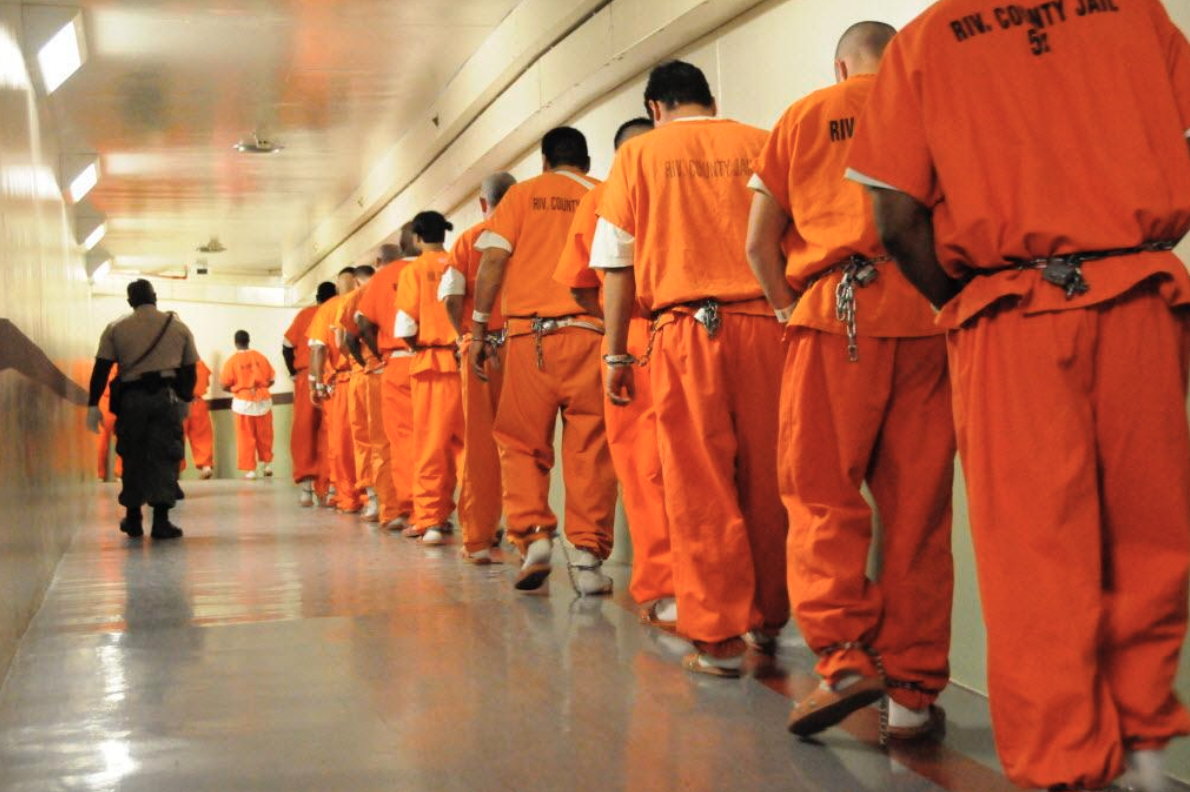Image provided by Orange County Register.
A prison is a place where accused criminals are kept before their trial or as punishment for their crimes. Simple, right? However, the prison system isn’t truly what it seems. Has it been creating a harmful environment for assumed criminals? That question can be answered by examining the history of prisons and how they have shaped society today.
First we should take a look at the history of prisons in America. In 1790, the first US penitentiary opened in Philadelphia, which put accused criminals in solitary confinement to reflect on their behavior and decisions. This was the start of more to come. In 1866, convict leasing—which allowed prisons to let private businesses use incarcerated people to work for them with a fee—became popular in Southern states. Black men were the primary target of this system, which was created after the Civil War and when slavery was abolished. White people aimed to find ways to insitute slavery and its ideals again, and one of the ways was through the prison system. The prison system and racism have always been intertwined. Convict leasing wasn’t completely outlawed in America until 1928, around 62 years later. In 1971, President Nixon drastically increased the number of prisoners by launching the “war on drugs.” This added to the reasons people (mostly Black and Latino individuals) could be kept in prison. Even minor use of drugs could result in an immediate sentence of 5 years, the same amount of years that is given for a violent crime, creating an unjust system. But there were some changes made to the prison system that had benefits as well. In 1965, the Prisoner Rehabilitation Act was passed, and different programs were enacted to help prisoners with socially handicapping conditions, such as alcoholism and lack of education, get the support they needed. And, in 2010, the Fair Sentencing Act was passed, which meant more drugs involved would result in higher sentences and less drugs involved would result in lower sentences. This was created to reduce the large number of Black and Latine Americans getting longer sentences for small amounts of drug use.
While there have been multiple changes within prisons throughout history, none of them have made a big difference in regards to strict solitary confinement. For starters, being in a confined space alone is less than ideal because inmates aren’t allowed contact with any other human beings. Additionally, they only have a limited amount of time to talk to their loved ones and spend the majority of their time alone without knowledge of how their family is doing. Many prisoners are forced to interact with their loved ones in an uncomfortable environment and are given no real space to talk, causing inmates to disassociate with their families. Parents, especially mothers, are found to be even more stressed after being separated from their children. Without constant updates about their kids, parents in prison tend to worry. Another struggle that incarcerated people face is that when people get stuck in one space for long periods of time, they tend to lose their understanding of why they’re there in the first place. They have the same routine everyday which makes inmates question the purpose and meaning of their lives. This eventually leads to boredom which also leads to frustration and unhealthy mechanisms to cope with boredom. There’s also trauma acquired from witnessing or even experiencing violence in prisons. Verbal and physical abuse from officers and even other prisoners can cause mental health disorders. In fact, all these things that happen to prisoners can lead to depression and Post-Incarceration Syndrome, which is similar to PTSD. Post-Incarceration Syndrome is a set of symptoms of mental health problems that released prisoners face and can eventually lead to anxiety, depression, avoidance, hypersensitivity, flashbacks, and difficulty with emotional regulation. Even if they’re released, incarcerated people tend to hold onto their experiences in prison for the rest of their lives, which affects their day to day life in society.
While there have been multiple changes within prisons throughout history, none of them have made a big difference in regards to strict solitary confinement.
While it’s important to understand what happens to incarcerated people in prison, it’s also important to acknowledge the groups of people that are targeted by the prison system. Black people in America are put into prisons at 5 times the rate of white people. 1 in 81 Black adults in the United States are serving time in state prisons, with Wisconsin leading (one in every 36 Black citizens in Wisconsin are incarcerated). Additionally, within Delaware, Louisiana, and Michigan Black prisoners are a majority of inmates. Several states have a ratio of Black to white prisoners larger than 9:1, one of the states being our very own California. The entire country of America carries racist undertones and implements them into systems like the prison system. Another minority that is targeted by the system are Latino individuals. They are incarcerated in state prisons at a rate that is 1.3 times higher than the rate of incarcerated white people. Black and Latino individuals tend to get sent to prison for smaller things whereas it takes a big thing for white people to get a prison sentence. A white person and a Black person could commit the same crime, yet the Black person would get a longer sentence in prison. An example of unfair sentences can be seen with Kim Potter and the murder of Daunte Wright. The white police officer shot Daunte Wright with a gun instead of taser in what was described as “an accident” and was given a two year sentence. Another contrasting example is the case of Fair Wayne Bryant. Bryant, a Black man, stole hedge clippers and was sentenced to life. The severity of the two cases doesn’t match the sentences that are given for them. In fact it would be more reasonable if the sentences were switched. Our country has created a system that portrays Black and Latino people as a threat and incorporates racial biases when dealing with rulings and punishments. Additionally, more white people are inclined to get a private attorney whereas Black and Latino individuals are less likely to do so, due to poverty. People with mental disabilities are also more likely to go to jail and face police violence due to officers’ and the government’s lack of education on how to handle these types of situations, leading to misunderstandings and more prison sentences. Miscommunication leads to brutal violence and sometimes even death. Elijah McClain was simply walking home when he was reported by someone for looking “sketchy,” which led to the police coming restraining him. The officers reported that McClain was trying to attack the officers, but in reality he was just pleading to go home. The officers thought he was “acting crazy” and restrained him even further, which eventually led to his death. On top of that, being confined in a small jail cell while dealing with a mental disability creates a more dangerous situation than before. With the prison system having far too many racially motivated “misunderstandings,” there has to be reform or even the abolition of prisons.
But what other options do we have if we don’t use prisons? Instead of just putting accused criminals in a small space for a majority of their lives, we should try to find the root of the problem, if there is one, and focus on fixing that to prevent it from happening again in the future. Rehabilitation is a safer and healthier option than prison by far, with prisoners getting the help and support they need to begin moving in the right direction. Therapy also helps inmates feel like they’re better understood and can help improve their mental states. Additionally, community service allows incarcerated people to be able to go out and do activities rather than stay in one area for long periods of time. House arrest also creates a comfortable environment for prisoners to stay in. However, abolishing prisons is the most reasonable and urgent action to take right now.
Aleesha Sachanandani is a senior at Washington High School. He was born in Hayward but has lived in Fremont for all of his life. This is his second year with the Hatchet and is currently the Arts and Entertainment editor. He loves building Legos, talking about vehicles, doing kung fu, and playing sports. He plans to do whatever his mind and heart agree on together for his future and is excited to explore. He also plans to work towards bettering the world to support various communities. GO HUSKIES RAHHHH


